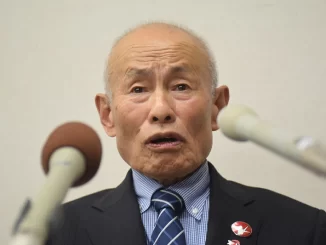
WASHINGTON—As U.S. Trade Representative Katherine Tai prepares to meet her Canadian and Mexican counterparts on Monday to review progress in the new North American trade agreement, she is under pressure from home builders and lawmakers to cut U.S. tariffs on Canadian lumber.
Shortages of softwood lumber amid soaring U.S. housing demand and mill production curtailed by the COVID-19 pandemic have caused prices to triple in the past year, adding $36,000 to the average cost of a new single-family home, according to estimates by the National Association of Home Builders (NAHB).
Republican lawmakers have taken up the builders’ cause, asking Tai during hearings in Congress last week to eliminate the 9 percent tariff on Canadian softwood lumber imports. Senator John Thune told Tai that high lumber costs were “having a tremendous impact on the ground” in his home state of South Dakota and putting homes out of reach for some working families.
The Trump administration initially imposed 20 percent duties in 2018 after the collapse of talks on a new quota arrangement, but reduced the level in December 2020.
“The Biden administration must address these unprecedented lumber and steel costs and broader supply-chain woes or risk undermining the economic recovery,” said Stephen Sandherr, chief executive officer of the Associated General Contractors of America. “Without tariff relief and other measures, vital construction projects will fall behind schedule or be canceled.”
On Friday, White House economic adviser Cecilia Rouse said the Biden administration was weighing concerns about commodity shortages and inflation as it reviews trade policy.
The tariffs are allowed under the U.S.-Mexico-Canada Agreement on trade, which permits duties to combat price dumping and unfair subsidies.
The U.S. Commerce Department has ruled that lumber from most Canadian provinces is unfairly subsidized because it is largely grown on public lands with cheap harvesting fees set by Ottawa. U.S. timber is mainly harvested from privately-owned land.

Tai said she would bring up the lumber issue with Canadian Trade Minister Mary Ng at the first meeting of the USMCA Free Trade Council, a minister-level body that oversees the trade deal.
Willing Partner
But Tai told U.S. senators that despite higher prices, the fundamental dispute remains and there have been no talks on a new lumber quota arrangement.
“In order to have an agreement and in order to have a negotiation, you need to have a partner. And thus far, the Canadians have not expressed interest in engaging,” Tai said.
Youmy Han, a spokeswoman for Canada’s trade ministry, said the U.S. duties were “unjustified,” and that Canadian Prime Minister Justin Trudeau has raised the issue with U.S. President Joe Biden.
“Our government believes a negotiated agreement is possible and in the best interests of both countries,” Han said in an emailed statement to Reuters.
But builders are growing frustrated with a lack of high-level engagement with high-level Biden administration officials on the issue as they watch lumber prices rise.
By Jarrett Renshaw and David Lawder





Be the first to comment